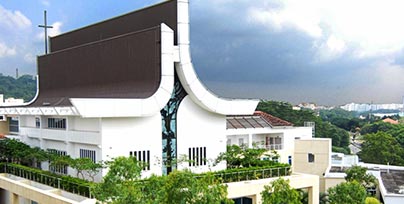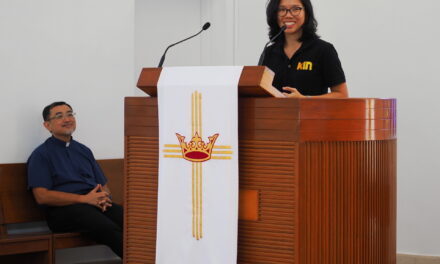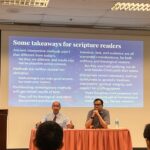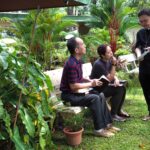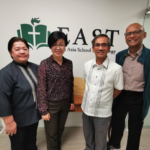
Faith, Tongues and Religious Education
Rev Dr Lim’s inaugural lecture revolved around Christian religious education, language and national language policy. As he said: “It is not too abstract, but still requires us to do some hard thinking.” The lecture was divided into three parts. The first part began with Acts 2. Recalling how the descent of the Holy Spirit led to the apostles preaching the Gospel in various local or vernacular languages, Rev Dr Lim expounded how such vernacularisation of the Gospel at the inaugural moment of the church throws light on the significance of vernacular language or mother tongue in Christian religious education.
At the personal level, the vernacularisation of the Gospel implies that Christians should strive to help others to know the Gospel in his or her heart language, and to encounter Christ therein. In church history, such vernacularisation of the Gospel has been the conviction of many Christian teachers over the centuries. Their endeavours create the unique space of encounter in which people will hear the Gospel in a heart-felt and liberating manner.
Shifting the attention from the first-century Jerusalem to the twenty-first century Singapore, the second part of the lecture focused on the social dimension of language and its implication for both the nation and the church. Quoting PM Lee Hsien Loong’s words: “Knowing MTL (Mother Tongue Language) helps to centre us as an Asian society and retain our Asian roots and values,” Rev Dr Lim highlighted how bilingual policy enables Singapore to become a member of modern states while retaining her Asian identity.
Singapore’s bilingual policy has added significance for Christians in the light of Acts 2. The church therefore needs to think fundamentally and to discern her role, situated between the state and individuals, in matters concerning the maintenance of mother tongue. Despite the ongoing debate among the academicians over the extent Singapore’s bilingual policy has or has not worked, the church, through a biblical lens, should engage bilingualism in such a way than brings blessings to both the church members and the public. The English-speaking churches, for example, may want to engage the bilingual policy by finding ways to intentionally encourage children of different ethnic background to appreciate their own and others’ mother tongues. Citing the idea of “MTL fortnight” in schools as an example, Rev Dr Lim mentioned that besides Chinese and Tamil members, there are also members of many other ethnic groups in the church. It is meaningful and significant if the church can find ways to remember and celebrate the stories of encounters between different ethnic groups and the Gospel.
As a Christian community which places great emphasis on cross-cultural missions, sorting out the relationship between the Gospel and mother tongue, and that between the church and national language policy is no trivial matter. To sort out these matters, there is no better place to start than one’s own turf.
The last part of the lecture focused on the plausibility question concerning mother tongue-based religious education in Singapore where MTL is second language. The lecture was brought to a close with the prayer that “the recipients of this Chair will be found faithful in the eyes of God and His people as teacher and servant.”
